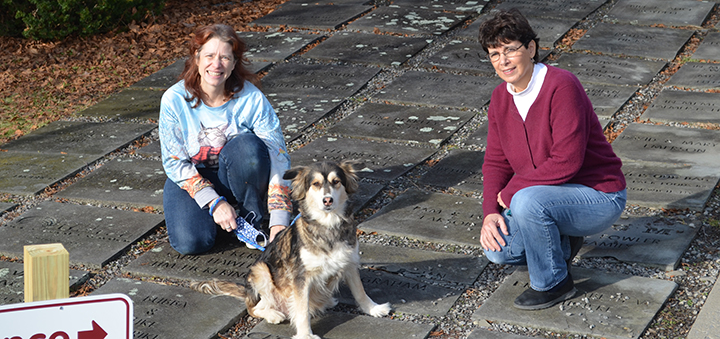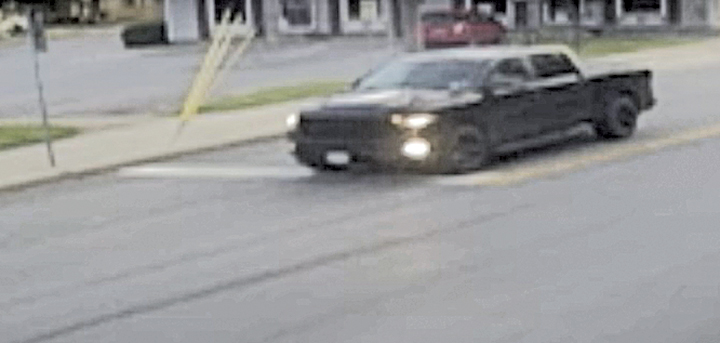PROGRESS 2021 – Chenango SPCA proud to be no-kill shelter and places animals first
Shelter Manager Kathy Wyder and Executive Director Annette Clarke kneel beside a recently adopted dog on stones marking the major donors of the Chenango County SPCA. (Photo by Tyler Murphy)
NORWICH – The Chenango County SPCA has worked hard and is very proud to be designated as a no-kill shelter.
That means, except for a few exceptions, the shelter does not euthanize animals due to space issues or basic illness. It takes more time and expense to accomplish the designation, but the current volunteer board has made the investments to make animal welfare a top priority.
There are 14 volunteers serving on the board of directors, many of them are community members and local professionals, including Board President James Dunne II, Vice President Heather Bartle-Ferrarese, Secretary Peggy Finnegan and Treasurer Bette Osborne.
A decade ago, when the Chenango County SPCA was under different leadership and did not have the no-kill designation, it operated as most standard shelters do.
Figures show more animals were being killed than were being adopted.
About two thirds of the animals brought to the shelter were being euthanized and only roughly a quarter of the animals were being adopted out.
Contrasted with today, currently the shelter finds homes for about two thirds of the animal brought in and on average only euthanizes about one in 15 animals.
“I want to emphasis that we are a no-kill shelter. That is the big deal stuff. You could see by the numbers that ten years ago we were euthanizing two-thirds of what we got in and only adopting out a quarter of the animals. Today we’ve flipped it,” said Chenango SPCA Executive Director Annette Clarke







Comments